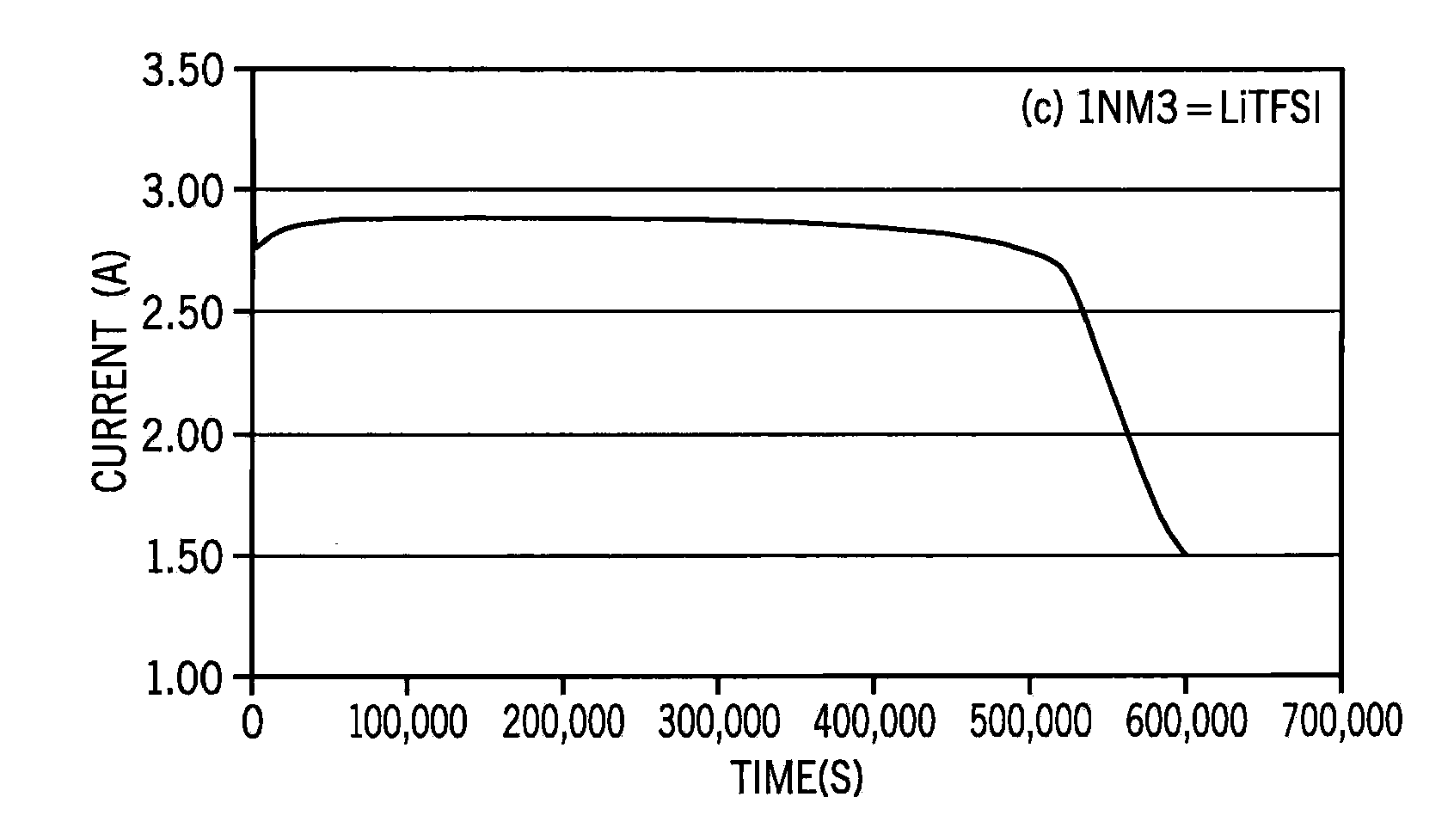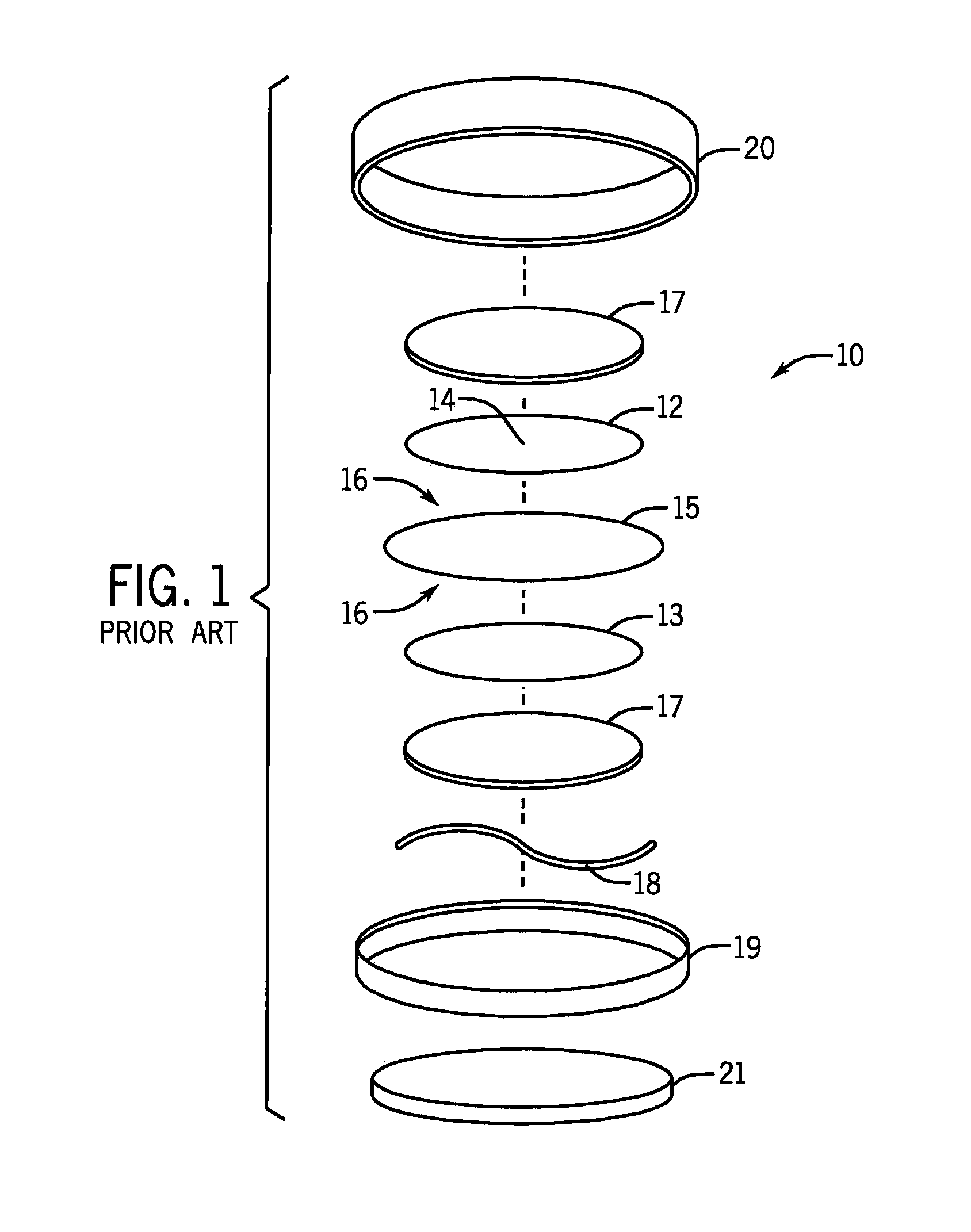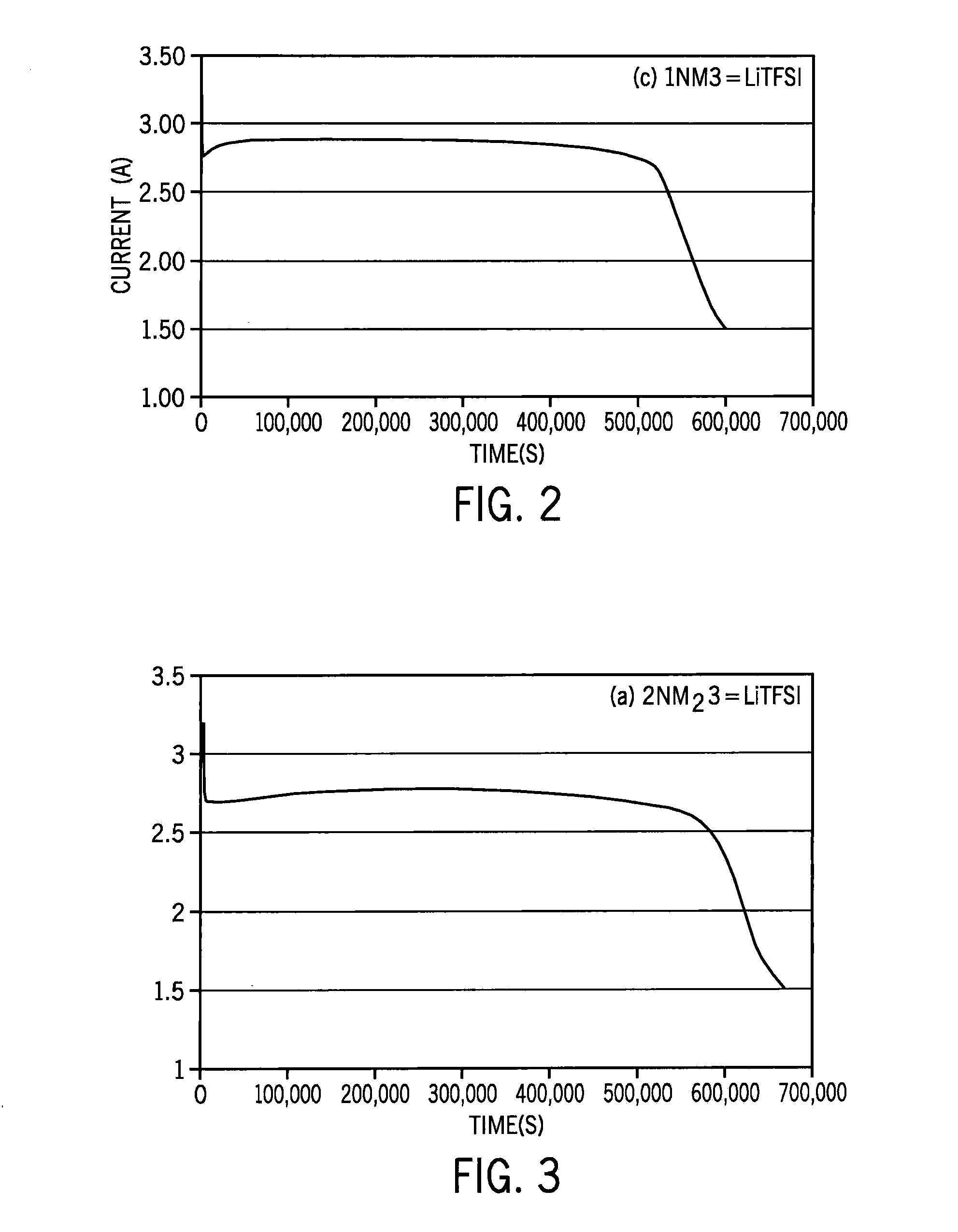Lithium/Carbon Monofluoride Batteries With Organosilicon Electrolytes
a technology of organosilicon and lithium monofluoride, which is applied in the field of batteries, can solve the problems of not being suited for long-term use, exposing the device to geothermal heating extremes, and military devices can be exposed to explosion-generated heat, etc., and achieves reliable long-term use and production at acceptable costs.
- Summary
- Abstract
- Description
- Claims
- Application Information
AI Technical Summary
Benefits of technology
Problems solved by technology
Method used
Image
Examples
Embodiment Construction
[0042]Our carbon monofluoride / lithium batteries are useful for a variety of specialized applications. For example, they can be used in military applications where heat resistance is important (e.g. battlefield related equipment such as radio communication devices, GPS, thermal imaging equipment). They can also be used in a variety of industrial applications, again where heat resistance is important (e.g. oil field services).
[0043]They are very lightweight (due to high energy density), thus retaining a highly desirable property of conventional carbon monofluoride / lithium batteries. Further, they have a very constant discharge voltage until essentially the end of their useful life.
[0044]The preferred electrolytes of the present invention can be used with a wide variety of lithium / carbon monofluoride battery constructions. As one example, a FIG. 1 device can have its standard electrolyte replaced with an organosilicon / lithium salt electrolyte of the present invention, and most preferab...
PUM
 Login to View More
Login to View More Abstract
Description
Claims
Application Information
 Login to View More
Login to View More - R&D
- Intellectual Property
- Life Sciences
- Materials
- Tech Scout
- Unparalleled Data Quality
- Higher Quality Content
- 60% Fewer Hallucinations
Browse by: Latest US Patents, China's latest patents, Technical Efficacy Thesaurus, Application Domain, Technology Topic, Popular Technical Reports.
© 2025 PatSnap. All rights reserved.Legal|Privacy policy|Modern Slavery Act Transparency Statement|Sitemap|About US| Contact US: help@patsnap.com



